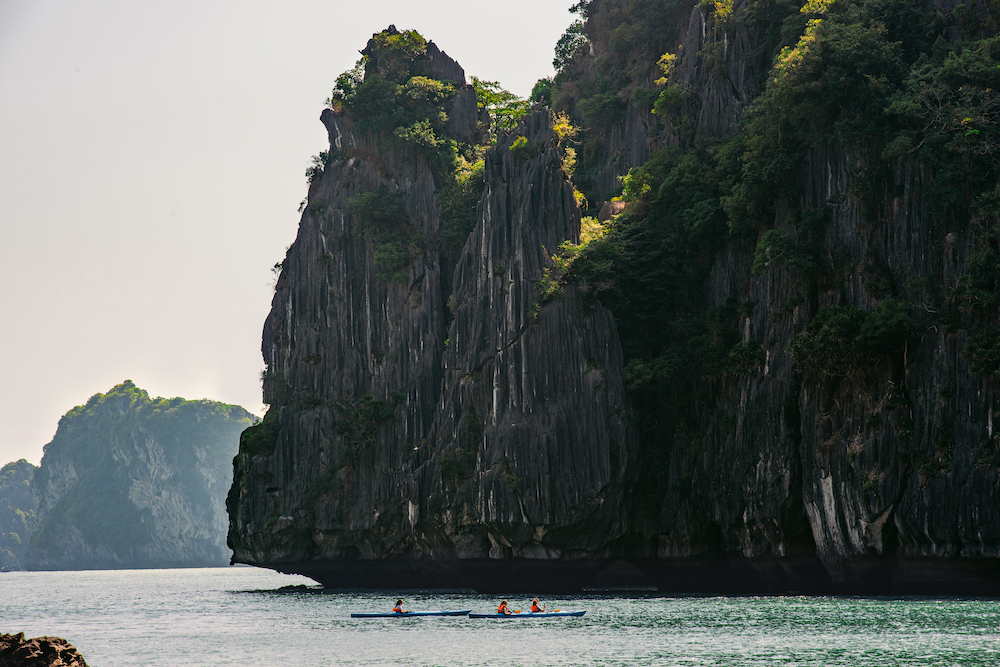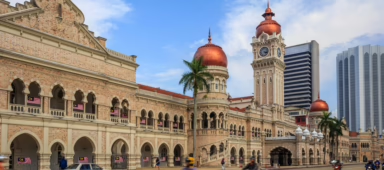Adventure seekers are now heading to the stunning Lan Ha Bay, a quiet corner of the Gulf of Tonkin, where forward-thinking tour operators and fewer restrictions are creating an alternative scene
It’s late afternoon and Bal Valdehuesa clings to a reverse incline, the peach-coloured sunlight illuminating his yellow-tinged dreadlocks and the thin glaze of sweat on his taut, muscular back. He’s about 15m high with no safety ropes – one false move and the climb will be over in an instant. The limestone rock face is menacingly jagged, but there are plenty of nooks and pockets he can wedge his hands and feet into. The top, another 15m or so, is covered with tufts of deep green jungle, while a few straggly bushes creep over the side as if offering a helping hand.
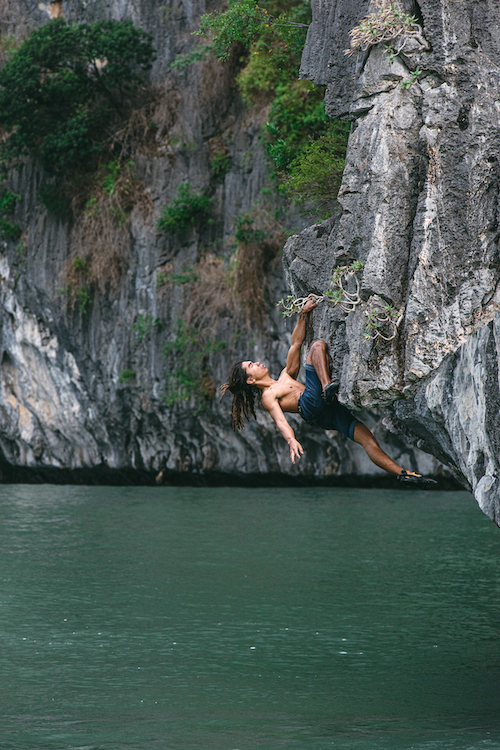
Bal’s foot slips, eliciting a reflexive gasp from the small crowd of onlookers below, but he quickly recovers and counters with a daring grab for a cavity about half a metre above. The risk pays off, and he lands his hand inside the hole. Now he’s secure enough for a trick. He puts his other hand flat on the surface and manoeuvres the rest of his body as far out as possible, a gymnastic demonstration of strength known as the human flag.
Satisfied with the height he’s gained, Bal moves his feet back to the wall and propels himself from the cliff surface. He leaps away with a yelp of triumph. Instead of crashing to the ground, he splashes into the emerald green waters of Lan Ha Bay. He surfaces after a few moments, ready to go again. The setting sun has morphed into a titian orb and is bathing the seascape with a gentle light, arousing dreamy greens and greys from the surrounding islands and islets.
The 30-year-old Filipino climbing guide has been scaling vertical surfaces for six years and leading climbing trips with Langur’s Adventures since August 2019. “When I first went out into Lan Ha Bay, I was amazed by the landscape,” shares Bal, who’s now been to Lan Ha Bay over 50 times. “It’s a maze of cliffs, beaches and water – it holds so many details that unravel as you move farther into the bay.”
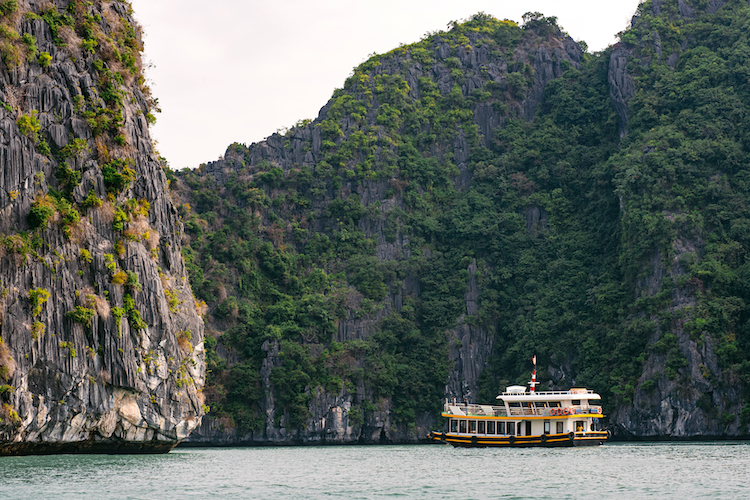
Deep-water soloing – climbs above water without ropes – and rope-assisted rock climbing are the most popular activities Langur’s Adventures offers. “One of the main reasons we set up here is that the limestone structures, formed millions of years ago, offer the ideal conditions for our climbing excursions,” says Langur’s Adventures’ sprightly owner and director, 29-year-old Nguyen Thi Minh Ngoc. “There are various pockets of unspoiled natural beauty – and a growing number of visitors in recent years.”
Ngoc’s small frame, styled dark hair and square spectacles – together with her young age – make her appear an unlikely owner for one of Lan Ha Bay’s burgeoning adventure tour companies, but she’s become a major innovator in the destination. When Langur’s Adventures launched last March, it catered mainly to customers from Europe, but it has since seen an increase in visitors from other parts of the world eager to experience the outdoor adventure playground for themselves.

Lan Ha Bay: More than just a cruise
Lan Ha Bay’s main draw is that it offers experiences that Halong Bay cannot. To safeguard Halong Bay’s reputation as a cruise destination, authorities have long been sceptical about alternative activities. In April 2017, they banned kayaking without warning, only to backtrack a month later after protests from tour operators and cruise providers. But kayaking, together with stand-up paddleboarding (SUP), has proved to be one of the most popular activities at Lan Ha Bay.

“Lan Ha Bay is much smaller than Halong Bay, but also sees far fewer tourists,” explains 42-year-old Tran Trung Kien, an outdoor enthusiast and co-founder of Umove SUP Club, which offers kayaking and SUP in several places across Vietnam. “But the best thing about Lan Ha Bay is the freedom it offers – you can swim and cruise anywhere you want.” He points out that in Halong Bay cruising is the only option for visitors, while in Lan Ha Bay they can enjoy trekking, cycling, camping, climbing, kayaking and SUP.
While deep-water soloists, rock climbers, stand-up paddle boarders and kayakers spend most of their time above water, British swimming tour company SwimTrek takes people below. SwimTrek pioneered multi-day swimming holidays and now offers tours in Europe, the Americas and the Middle East. In 2018 it launched in Southeast Asia, with its first Lan Ha Bay tour selling out in a matter of days.
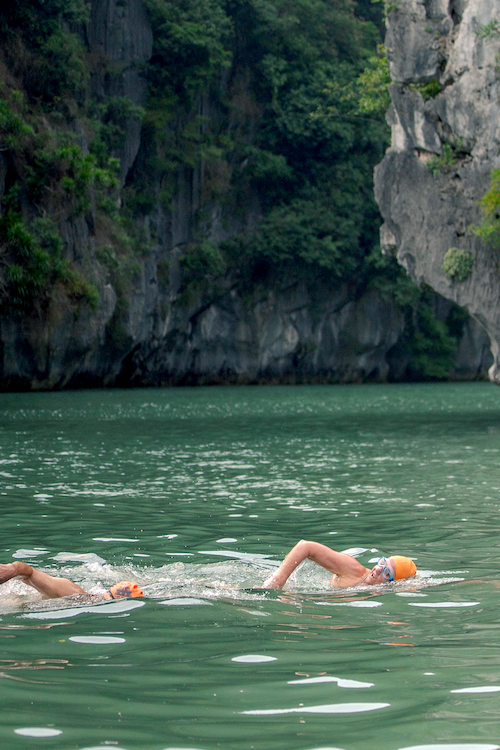
“SwimTrek is always on the lookout for amazing new locations to swim – locations that offer something different,” says 32-year-old Graham Buckley, one of the company’s lead swim guides. British-born and sporting a stubbly beard, Graham moved to Vietnam permanently in 2016 and immediately began scoping out sites for SwimTrek. Lan Ha Bay quickly emerged as the best place to launch its maiden expedition.
“Lan Ha Bay offers the same limestone scenery that Halong Bay is so famous for, but without the mass tourism,” explains Graham, “and due to the more flexible regulations in Lan Ha Bay, we are able to explore and try out new swims all the time.” In Halong Bay, swimming is restricted to a few beaches, in part due to the sheer number of cruise ships present. But there are no such regulations in Lan Ha Bay, so it’s possible for SwimTrek to coordinate swims that cover up to 4km a day, including island circumnavigation, as well as swimming from beach to beach.
“Lan Ha Bay also lets guests experience local culture as well as
the scenery and huge biodiversity”
“Due to demand, we’re steadily increasing the number of departures in Lan Ha Bay,” says Graham, explaining that this year SwimTrek is offering more Vietnam trips than ever before, with three tours scheduled for April and three more in October. “Being based in Lan Ha Bay also allows us to stay on Cat Ba Island, which lets the guests experience local Vietnamese culture as well as the scenery and huge biodiversity that the island has to offer.”
Traversing Cat Ba Island
As the jumping-off point for most excursions into Lan Ha Bay, Cat Ba Island is fast becoming a hub for adventure travel in northern Vietnam. It’s the largest island in the Gulf of Tonkin and Cat Ba National Park, and a sprawling swath of lush flora and rare fauna covers most of it. According to Le Manh Kien, the 35-year-old general manager of Cat Ba Eco Lodge, a small collection of wooden cabins nestled in a pretty jungle-encircled valley, Cat Ba Island is also quickly becoming a popular destination for enjoying leisurely strolls.
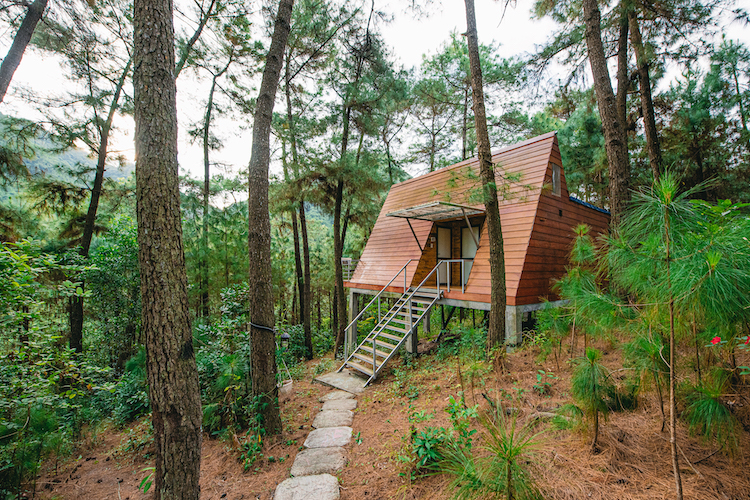
“I love oceans and mountains, and Cat Ba offers both,” says Kien, who took over the family business in 2014 and arranges half- and full-day guided walks in Cat Ba National Park. Trails in the park have been designed to let visitors take in spectacular views of the land and sea, and there is also the rare chance to spot the golden-headed langur, one of the most endangered primate species in the world.
Kien also offers cultural visits to the Cai Beo floating village which, since the relocation of the residents of similar hamlets in Halong Bay, has become one of the largest of its kind in northern Vietnam. Cai Beo is an extraordinary example of how locals have lived on the water – for thousands of years, some argue – in makeshift, colourfully painted houses while cultivating small-scale fish farms.
Back to basics
Despite the rise of alternative activities, cruising still remains both possible and popular. Topas Travel specialises in tailor-made tours across Vietnam for active travellers and now favours Lan Ha Bay for its cruising options.
“Most remain optimistic that Lan Ha Bay can maintain
its unique appeal if managed correctly”
“The itineraries are more flexible so the boats can work by themselves and don’t overlap with each other,” says 37-year-old Tran Thuy Hai, director of Topas Travel, comparing Lan Ha Bay to Halong Bay, where cruise routes are fixed and often crowded.
With a long history of working in Vietnam’s most scenic destinations, from the northern mountains to the central caves, Hai is keen to show off the most pristine spots in the country. “Also, there are more small beaches,” she adds with a grin. “Who doesn’t love a good beach on a deserted island?”
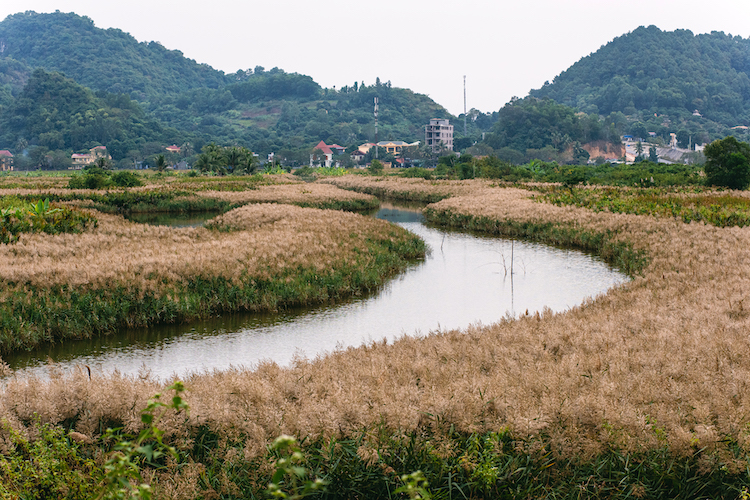
While Hai and the destination innovators are eager to promote Lan Ha Bay, the looming threat of overtourism is still keenly felt. But with lessons learnt from the development of Halong Bay, most remain optimistic that Lan Ha Bay can maintain its unique appeal if managed correctly.
“My hope is that Lan Ha Bay remains emerald green,” says Bal. “When I come back here many years from now, old and barely able to climb, I hope I will still be able to see langurs frolicking on the side of the cliffs.”
This article was originally published in the January 2020 issue of Going Places.
